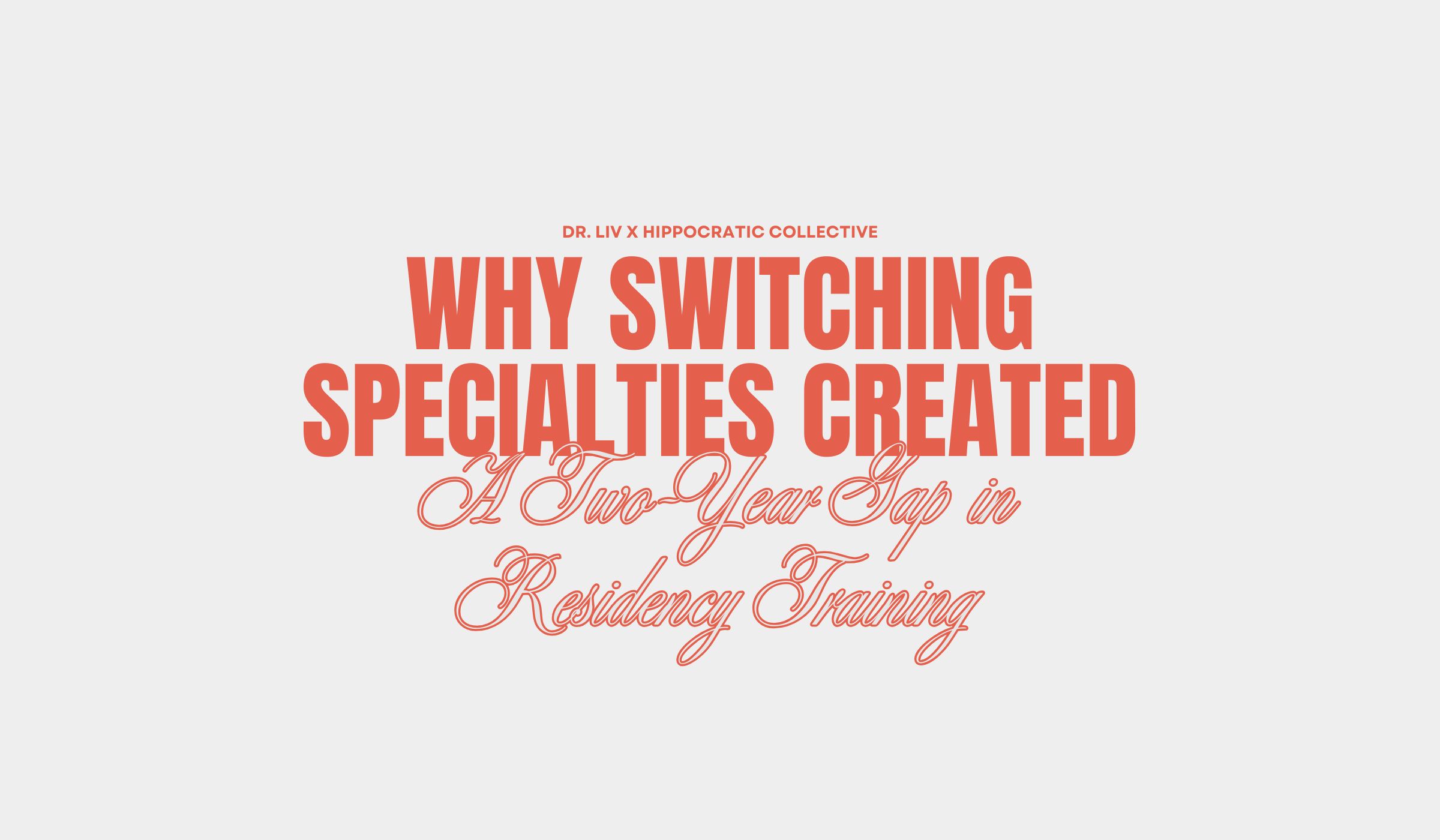Switching specialties resulted in a two-year gap. Here’s how I’m using that time.
Where the two-year gap comes from
When I left Family Medicine to pursue Dermatology, I had to plan for a two-year gap in training.
I left Family Medicine in July 2024. Even if I matched on my first shot in the 2024–2025 ERAS cycle, Dermatology positions begin as PGY-2 roles. That meant the earliest I could start Dermatology residency was July 2026.
In other words, I joined the application cohort of 2025 medical school graduates. Dermatology applicants match into a Transitional Year or Preliminary Year (TY/Prelim) starting July 2025 and a Dermatology position starting July 2026. Because my Family Medicine intern year already fulfilled that requirement, I did not need to repeat a TY/Prelim year.
How I am spending my two-year gap
I’m currently completing a postdoctoral fellowship focused on diseases of the hair follicle. My work bridges basic science and clinical research, and I see patients weekly. (Yes, you can do a postdoc with an MD!)
I also have the opportunity to work with medical and undergraduate students. With the lighter work hours compared to residency, I even get to volunteer my time to mentor medical students outside my institution.
I found my postdoc position by reconnecting with a previous collaborator from medical school who had since started her own lab at a different institution in New York City.
The experience has been invaluable. I’ve joined a world-class dermatology department, learned from exceptional attendings, and gained perspective on how another medical system operates. The postdoc is strengthening my foundation in hair biology, continuing the work I began during my medical school research year on alopecia areata, and setting me up for a range of career paths.
Why the two-year gap isn’t a waste of time.
In medicine, it often feels like everyone is in a rush to reach the next milestone–finish med school, match, become an attending, get promoted–as if happiness or fulfillment awaits only at the next step. But the arrival fallacy is just that: a fallacy.
The arrival fallacy is the mistaken belief that achieving a future goal, like matching, graduating, or becoming an attending, will bring lasting happiness or fulfillment. In reality, satisfaction tends to fade quickly, and the sense of “arrival” is replaced by the pursuit of the next milestone.
As an undergrad, a mentor once advised me not to rush through my career, and I took that to heart.
I’ve been able to pause and actually enjoy each stage instead of living on autopilot or making choices based solely on what others around me are doing. Carving my own path, even when it meant taking six gap years, has given me the richest experiences of my life. I’ve trekked to 17,500 feet at Everest Base Camp, backpacked around the world for months at a time, learned to scuba dive, dined at the world’s best restaurants, and picked up a third language along the way. Those experiences have expanded my perspective in ways no traditional timeline could.
Even though I won’t be an attending until my late 30s, I don’t consider myself “behind” by any measure. Focusing on what I value, rather than chasing what’s conventional, has made this journey deeply rewarding.
At first glance, two years outside of clinical training can feel like lost time. On social media, I’ve seen stories of people who became physicians by age 24. Impressive, but not my path.
By the time I start Dermatology residency, I’ll have taken six gap years: three between undergrad and medical school, one research year during medical school, and two between Family Medicine and Dermatology.
Time and youth are precious. I spent my 20s living in New York City, traveling to over 30 countries, working in business, farming, and hospitality, and competing in international sailing regattas. I met and married the love of my life and made lifelong friends at every stage. Even when I was on the “wrong” career path, I loved my Family Medicine intern year.
I’ll never get my 20s back, which is why I’m grateful I didn’t rush through them. Every experience, inside and outside of medicine, has shaped who I am as a physician and as a future dermatologist.
Careers are long. Rather than sprinting toward a finish line that doesn’t exist, I’m choosing to enjoy each stage of the journey.


%20(2560%20x%201076%20px).jpg)
%20(1).jpg)
%20(2560%20x%201076%20px).jpg)